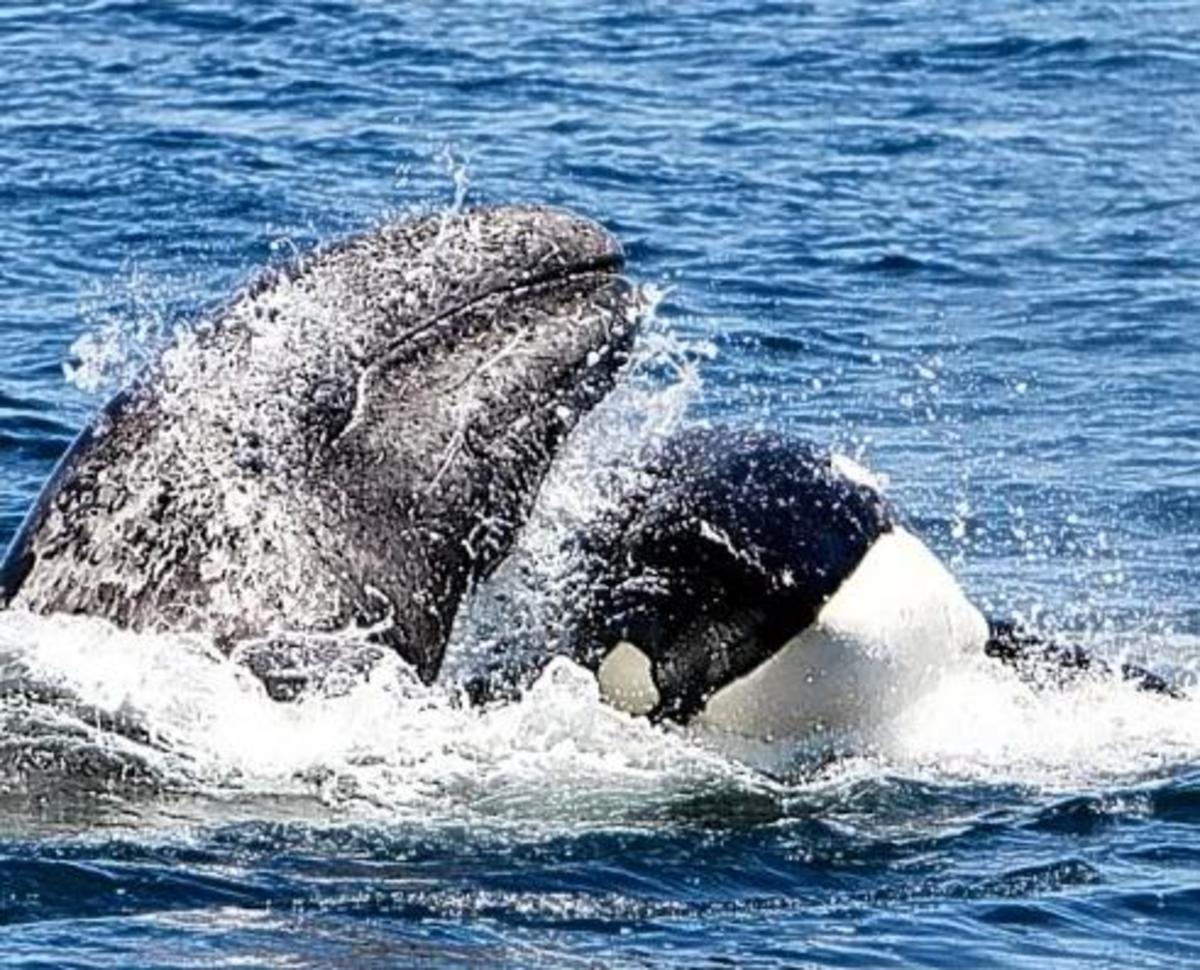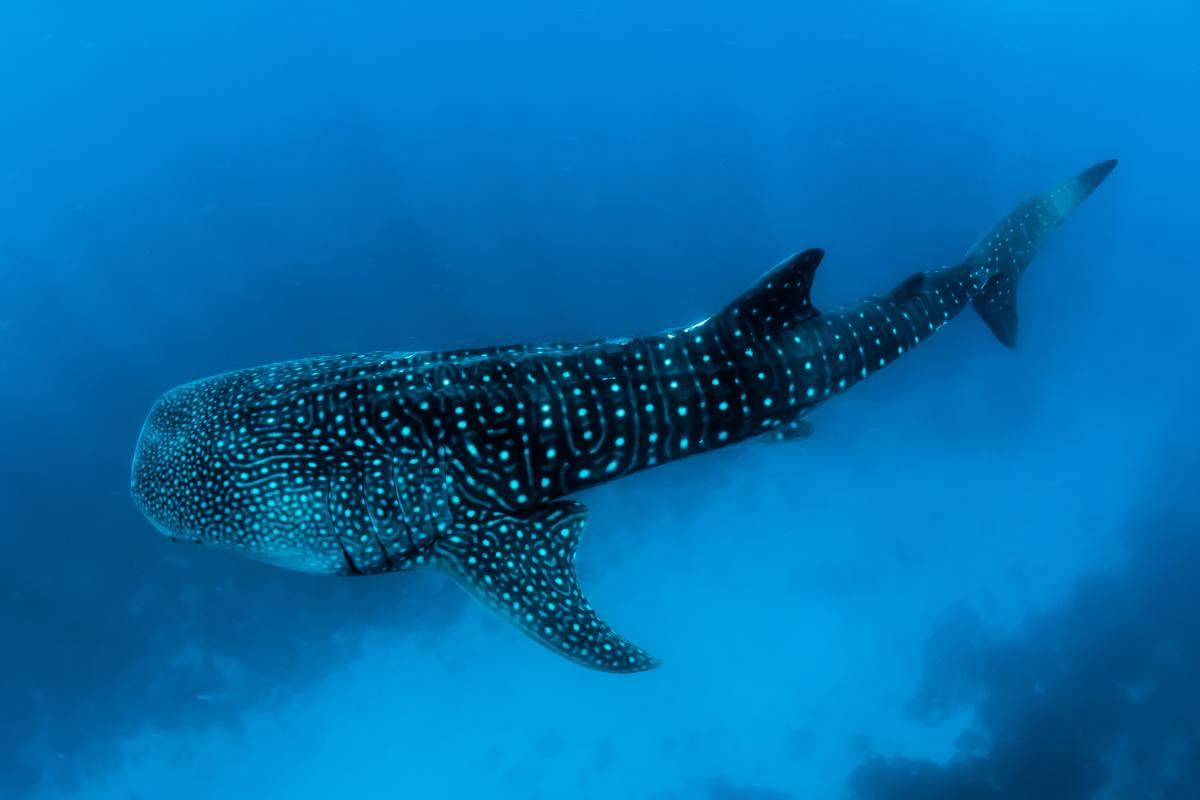- HubPages»
- Education and Science»
- Life Sciences»
- Marine Biology
Companion of The Bath - The Sponge
Standing in a wonderful bath shop, on a clear sunny day Abruzzo, Italy - I looked across at the waves rolling in on the Adriatic Sea, as I fondled a silky sea sponge. It was so superior to anything similarly sold in the U.S. bath and spa shops. It made me think about these queer and lowly creatures that we've encountered in dives both off the coast of Ambergris, Belize and Grand Turk.
Thinking back on those trips, I'm always surprised to learn that many people don't realize that real sea sponges are not plants, but simple multi-cellular animals. Other people fail to understand that natural sea sponges, unlike their synthetic counterparts, not only have many more uses, but also last much longer. The synthetic sponges (another petroleum by-product) are breeding grounds for germs, whereas natural sponges can be washed out and used again and again -- sometimes for years.
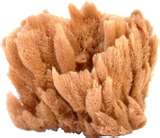
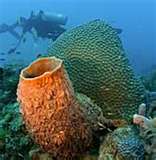
Youthful Pursuits
Like ourselves, to whose comfort and cleanliness it has been known to minister to for generations, the sea sponge once had life, movement, appetite, and in its early youth, extreme activity.
This curious honeycombed substance, so light and elastic when dry, so soft and collapsible when wet, is simply the silken, fibrous skeleton of an animal. If we catch that animal young enough, we may see it scurrying about in the sea as if it would "sail beyond the sunset and the baths of all the western stars" until it dies.
The lower half of this fuzzy little navigator is bearded with hair like processes waving like tiny oars, thus propelling it through the water.
When it desires to progress in a straight line, it does so fairly well, but when it no longer directs its course, it stops, and its still waving cilia make it spin like a whirligig beetle.
This consuming activity lasts but a short while. Like the baby oyster, the youthful sponge thinks better, or worse, of its days of adventure. It then sinks to the bottom of the sea, attaches itself to rock or weed, or to some shelled animal, and its roaming days are at an end.
The oval body with which it set out in life then undergoes marked changes. The ciliated part is drawn inward, and the globe-shaped little creature becomes cup-shaped. Within there is busy reconstruction of parts.
The cell masses are changed into canals in which there is a jelly-like mass of flesh equipped with more of the vibrating processes to draw water and food into those canals.
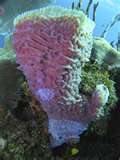
Cleansing Canals
The tiny pinhole-like perforations in our bath sponge open into the canals by which water is conveyed to bear life-sustaining oxygen to the sponge and also to feed it.
Each draft of water taken in holds organic and vegetable matter which, caught and strained away by a delicate membrane at the junction of the little canals, is digested in the sponge's alimentary system. The exhausted water, together with waste products of the body, is then forced out of the large openings.
The sponge grows as it feeds. It gives rise in due course to eggs which at the right time are washed out of the parent body in the flood of water ejected from the main channels through the larger openings. These hatch into free-roving little animals which later on become sedentary,
Catch a sponge alive, confine it in a sea pond and let it have enough water for breathing and nutriments -- and it will continue its growth.
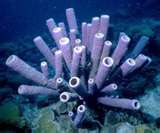
Variety Is The Spice Of Natural Life
As mother nature often takes more than one means to increase her store of sponges, she has claimed many different situations for this branch of her children -- inshore waters, deep-sea abysses, and all the ranges of soundings between.
Silicious spicules, or needles -- enter into the composition of many sponge species, but there are not of commercial value.
In the so-called glass sponges, the silica is of the thinnest, most brittle texture, and interwoven or fitted to form a glass network of great beauty. Yet, this extraordinary substance serves as an anchorage in the Japanes hyalonema, which is attached to the mud by a bundle of strands of "glass rope," which might have been produced by a human glassblower of unrefined art. Many varieties of the glass sponges were thought to be extinct, but have recently been re-discovered.
Other species of sponges bore into the solid rock of limestone cliffs and destroy them. They bore deep in the yielding chalk, open the way for the disrupting water, and make destruction sure, but very slow.
Others bore into various shells- they oyster, mussel, scallop -- causing them to go to pieces. Another variety, Clilona has even been found penetrating into substances such as hard marble -- and it is very destructive with coral.
Of course, we must not lay the blame for this sort of work to the account of all the sponges that we see because high tide and low tide also do their work. Each genus has its station, its own sea-keep -- its home in fresh water, its way upon the rock.
There are many amazing sponge varieties to explore, such as the Breadcrumb Sponge, a colony of many sponges; the Mermaid's Gloves which cast up, living in rough tide. My favorites are the Elephant Ear sponges which can be seventy-feet high, along with the tremendous Neptune's Cup -- a marvelous piece of architecture three or four feet high, built up by many sponges which act as one, which raise the great stalk, then the vase-shaped cup, and make it as lovely as any work of an old Etruscan potter.
The Wonderful World Of Sea Sponges
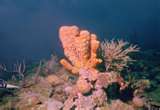
Commerical Sponge Types
There are over five thousand different types of sea sponges. Perhaps one of the most amazing things about sponges is that one cubic centimeter of sponge can filter over twenty liters of water a day. Here are a few sponge varieties worth knowing about:
- Silk sponges (aka Hard Head sponges) -- Best use is exfoliating scrubbers and are loved for gently getting into and cleansing facial pores and applying cosmetics.
- Grass sponges-- Not as soft as the wool sponges. Uses include: Cleaning tiles and walls, faux painting, general hardware etc.
- Wool sponges -- They start out firm, but with use they get softer and softer. Uses include: Carpets, cosmetics, painting, washing cars, and appliances.
- Elephant Ear sponges-- Smooth on one side and rough on the other they are favorites of artists and aquarium enthusiasts.
Other types of sponges worthy of mention (just for their beauty) are: Mantapas sponges, Brown Tube Sponges, Stovepipe Sponges, Row Pore Rope Sponges, Blue Callyspongias, Azure Vase Sponges, Orange Ball Sponges, Yellow Calcareous Sponges, Boring Sponges, Brown Bowl Sponges, Honeycomb sponges, Barrel sponges, Chimney sponges, and Strawberry Vase Sponges.
Note: The best sponges are those who have not been "processed." In other words, you don't want sponges that have been bleached. That might make them attractive looking but bleach and harsh chemical weakens their strength and length of use. Non-processed sponges are simply rinsed in plain or seawater.
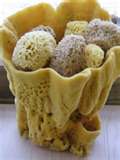
Endangered Sponge Species
Around the world, many sponge species have made the list of endangered species. We need to protect them, not for their value as natural bath sponges -- but for their value to cleansing the ocean their being rich sources of new bio-active chemicals that could lead to pharmacological uses. Without sponges, we may lose valuable sources of potential new defenses against microbial infections.
As much as I enjoy a fine natural bath sponge for my queenly spa bathroom, the truth is I'd rather leave them to where they belong in nature. I guess it's the knowledge that these innocent creatures, when harvested from the water, look a whole lot like pieces of raw liver. They are beaten, and then scraped to get rid of their skeletal dead tissue. Sometimes, they are merely washed and dried several times before being sold in the markets, where very often -- they are bleached, trimmed, and dyed for visual prettiness.
Recently, it has been announced by the scientific community that lobsters and crabs indeed do feel pain -- although not in the sense that we do, with neurons inside our brain. Regardless, it somehow just seems wrong to harvest them purely for decorative purposes, which is one of the commercial markets for them.
Barrel And Chimney Sponges
If You'd Like To Know More!
- Best Abruzzo Beaches & Blue Flag Beaches Italy
If you are staying at Casetta Lucciola we are very proud to say that we have over half of the very best of Abruzzo - Orange Barrel Sponge at Tunnels, Grand Turk
Orange Barrel Sponge at Tunnels, Grand Turk - Purple Tube Sponge Colony
- South Florida Scuba Diving News - Industry and local Florida dive news
Florida scuba diving and snorkeling dive center with shops throughout South Florida. Provides full service for scuba diving including booking of dive trips and charters, instruction and certification, equipment rentals, Nitrox fills. Shops in Boca R - Sponge
- The Wonders of the Seas: Sponges



